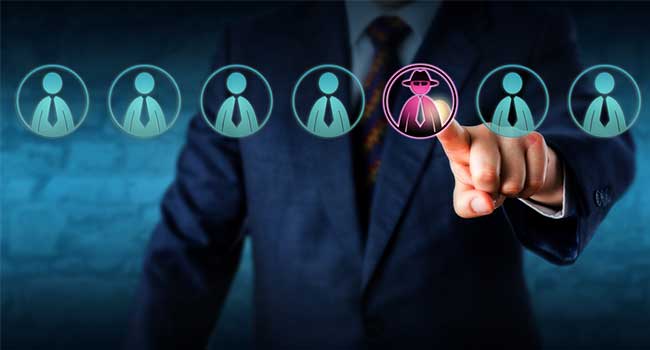
Guide for Protecting your Company against Insider Threats
- By Isaac Kohen
- Dec 28, 2016
Cybersecurity is mainly outward facing. Most products like firewalls, anti-spam, and network intrusion devices are designed to keep hackers on the outside from getting in, but that outward approach does not address an equally dangerous situation: the insider threat.
A Profile of the Insider
There are two kinds of insider threats: the malicious employee, contractor, or vendor and the unwitting victim of a hacker attack. IBM in its 2016 Cyber Security Intelligence Index says that 60% of cyberattacks came from insiders. Three-quarters of those were intentional. Case in point - monitoring what goes on inside your network is just as important.
The employees to watch for are:
- Disgruntled employees
- Employees with access to sensitive information that can be monetized
- Phishing Victims
- Employees who are just careless with regards to security
Below we show specific events that an employer should monitor in order to detect and prevent insider threats. Remember, every organization is different, so work backwards to understand what files and systems you want to protect and then check who has access. Many times, we’ve seen companies realize that an audit was never performed on user access and many more people than they thought had access to sensitive information.
Monitoring Employee Behavior - Behavior to Look Out For
Deleting Files. Employees delete files for many reasons, however, those files are company property and most likely could have been used at a future time. Additionally, deleting files in a system can cause structural IT damage. Alerts should be set for deleted files, based on seniority, access and file type.
Delete or Access Key Accounts. Not everyone needs access to everything. Sometimes in order to not inhibit particular work processes, employees are given access to files that are stored with other information not necessary for their tasks. When employees access files that do not pertain to their daily tasks and roles, the access should be recorded and depending on the sensitivity of the file, administrators may need to be alerted.
Copying data to a USB. It’s the easiest way to walk away with a chunk of data. All USB inserts and information copied to USB drives should be monitored.
Sending email to a competitor. We all know who’s hands we wouldn’t want our data to land in. Create a list of competitors and domains you would find suspicious if data was sent to from a work computer.
Printing confidential information. This can be dangerous for two reasons - one it’s easy for an employee to transfer data to a third party but it can also leave a client’s information just lying around the office for anyone to see.
Granting access. Some industry regulations, such as SOX and HIPAA, require that employers have a certification process. This is a formal, documented process for approving and granting employees access. But certain individuals have access to grant themselves elevated access. Or a person can get a hold of the credentials of an administrator.
Keyboard logging. Keyboard logging while popularly used by malicious users from the outside can also be a valuable tool for real-time alerting (for example if someone reached how to access blocked files) and even more helpful when doing IT forensic investigations to understand the full story.
Applications Used. Applications used should be monitored for two reasons. The first reason is because insider threats are more likely to use personal applications to transfer data. So if you see someone is logging into their g-mail account at work more than usual - that’s a red flag. Another reason is to compare one user’s application use to others within the department. If someone is consistently logging into applications that no one else in the department is using - that can be a red flag as well.
What actions should be taken if users engage in high-risk behavior?
Each type of behavior needs to be given an appropriate risk level. For example, a very- high risk action could be putting company financials onto a USB drive while a low risk action could be copying an unreleased brochure to a USB drive. In many cases, if the action is low risk, its best to warn the user and notify them that their behavior could be of risk to the company. This has been proven as a good preventive measure from having the user repeat the action. If the behavior is deemed as high risk, blocking the action or locking the employee’s account is acceptable protocol.
After-the-Fact Forensics
While taking all the above preventive measures should keep your organization secure - employees can get creative. Logging employee actions is key to the after the fact investigation. Not only does it help you figure out what en employee has taken or deleted, but also the weak point in your security setup. Having this information allows you to protect yourself in the future. Additionally, the data can also be helpful in case of any legal action.
On the Need to be Secure
Looking out for and being able to track the aforementioned behavior allows employers and administrators to add an extra degree of security to their IT infrastructure. The amount of incidents surrounding insider threats is on the rise every year and still the majority of organizations haven’t put in the proper procedures to detect and prevent insider threats. Don’t let your organization get the bad rep from a data breach or have their IP stolen - start putting the proper measures in place today.